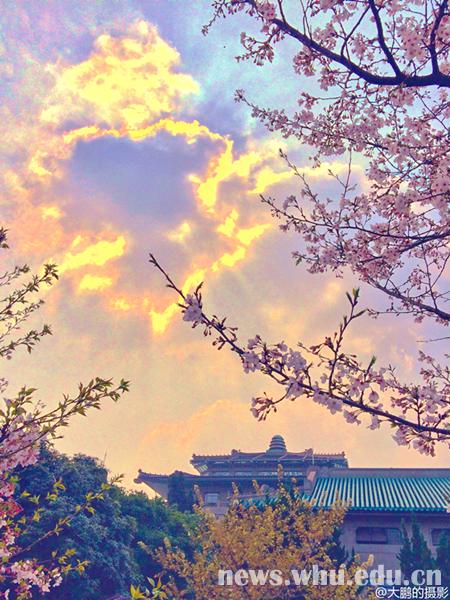For Wuhan University and all WHUers, spring is a special season of festivity. At this time of the year, Wuhan University is invariably inundated with tourists coming all the way from far corners of the country for the annual Cherry Blossom Festival. The visitors come to enjoy the visual pleasure of the cherry blossoms. While it is widely known that cherry blossoms contribute greatly to the fame enjoyed by WHU as the most beautiful university in China, their origin still remains a mystery to many. In fact, you would not find any cherry blossoms back to the early 1930s. So where do the flowers come from?

The story goes all the way back to the Anti-Japanese war which broke out in the 1930s. Early in 1932, the National Wuhan University, the predecessor of the present Wuhan University as we know it, moved from its old site in Dongchangkou to the then desolate, yet wide area provided by the Luojia Mountain. Enormous construction work ensued, only to be interrupted by the war in 1937.
The year 1938 witnessed a legendary chapter in our university’s history: threatened by the Japanese aggression, Wuhan University started the westward movement to Le Shan, Si Chuan. The Luojia Mountain still under construction was expropriated to house the Japanese headquarters as well as a sanatorium for injured Japanese soldiers.
In 1939, allegedly to relieve the homesickness of their soldiers, the Japanese army shipped the first batch of Japanese cherry blossoms, one of Japan’s national flowers, to be planted on WHU's campus, despite opposition from Shanghao Tang, an assistant lecturer and returnee from Japan who was asked by the then President Xinggong Wang to stay and guard the campus.
However, the story doesn’t end here, since had it been only this, it would have made the cherry blossoms just a reminder bearing the stigma of war. They are, as a matter of fact, also a token of friendship between China and Japan which reignited 30 years later. In 1972, the two countries normalized their diplomatic relations, and to celebrate the moment, a batch of cherry blossom trees were offered to the then Premier Enlai Zhou, who later passed on 20 of these trees to be planted at Wuhan University. Fast forward to 1983, in celebration of the 10th anniversary of the Sino-Japanese friendship, Mingquan Wang , a biology professor from WHU then studying in Kyoto, was given 100 cherry saplings, which he later donated to WHU to be planted in the Maple Garden and Cherry Garden, places which enjoyed their first blossoms in 1986. Moving on to 1992, a Japanese delegation visited Wuhan University and donated 200 cherry saplings, which were planted in the east of the Humanities Hall.
Revisiting his alma mater in 1985, Shanghao Tang , at the sight of the exuberance of the first batch of cherry blossoms at WHU, sighed: “Though their origins trace back to the war period, these trees are innocent and grow uninhibitedly. In my eastward journey to Washington D.C. last month, I also witnessed the cherry blossoms flourishing in front of the White House. At the end of the day, beauty itself is borderless.” Indeed, despite a difficult past, these cherry blossoms may very well transcend history and stand eternally against the vicissitudes of time, justifiably, for a pure beauty of their own.

(Edited by Diana & Sijia Hu)